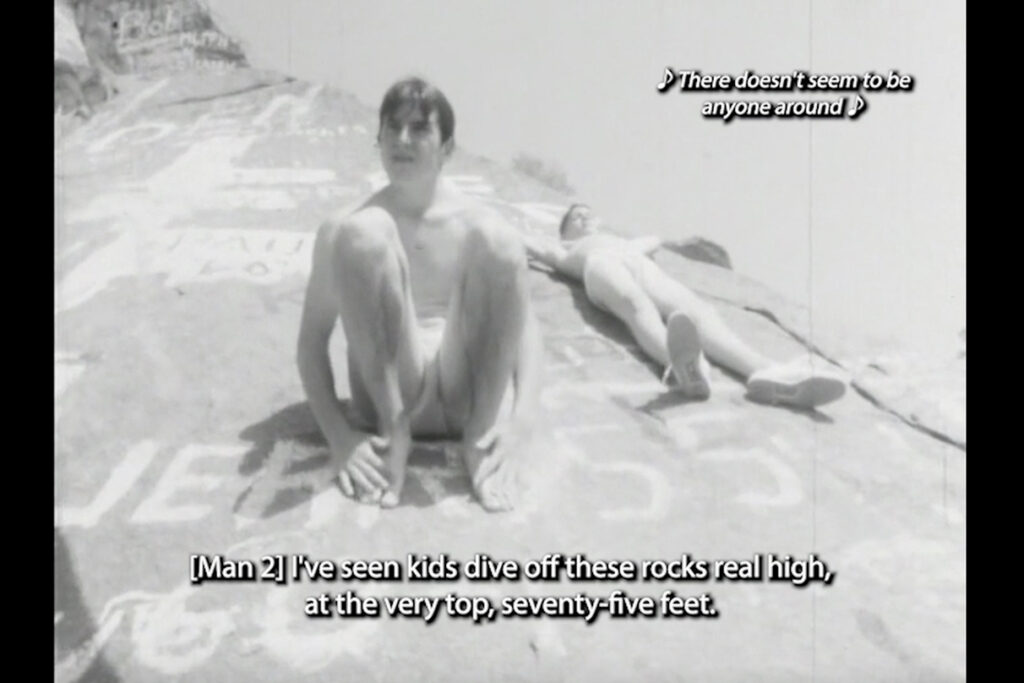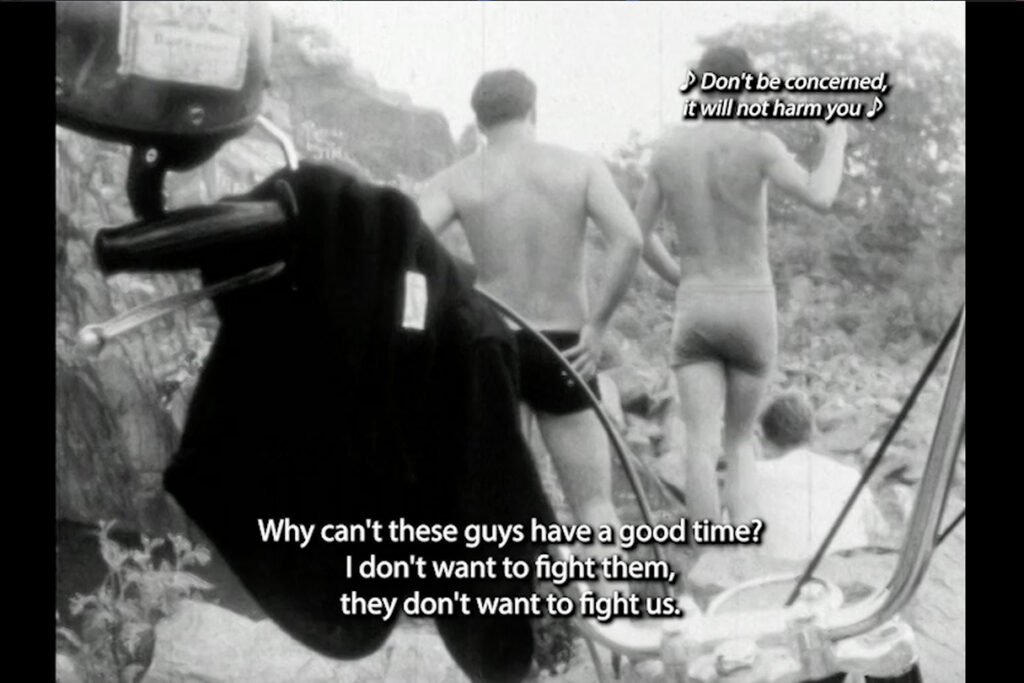Film for All: VMA Class Learns the Art, Necessity of Accessible Cinema

Cinema is meant to be understood and received by an audience in diverse, enriching ways. While most art houses, commercial theaters, and independent cinemas understand this, they are not equally accessible or accommodating for movie-goers.
Identifying this problem and seeking ways forward is part of the mission of Assistant Professor Malic Amalya, who teaches VM 331: Accessible Cinema. The course teaches students to produce and edit captions and audio descriptions for non-auditory, blind, and low-vision audiences.
Kolbie Jones ’23 has produced captions and audio descriptions for the film Quarry (1970) by Richard Rogers, an experimental documentary about young men and women hanging out in Quincy Quarry during the Vietnam War, now available through the Harvard Film Archive. Jones began the work in Amalya’s class this past spring.
“By the end of the semester, students understand the importance of creating accessible films and videos, know and practice the professional standards of captioning and audio description, and push the creative potential of captioning and audio description,” said Amalya of the course.
The class was divided into two main projects, Jones said. First, each student created audio descriptions (AD) and closed captions (CC) for an existing film. “We spent half the semester working on that project, then we created our own films that integrated AD and CC into the production of the film itself,” Jones said.

Tris Arthur ‘24, developed captions for Reckless Eyeballing (2004), Christopher Harris’s “hypnotic inspection of sexual desire, racial identity, and film history,” according to the Criterion Channel, which is now streaming the film with Arthur’s captions. Arthur also used captions and audio descriptions on her own film to articulate gender dysphoria as a transgender woman.
“The audio description process allowed me to draw unfiltered attention to the way my body looks and reacts within that state, while the captions allowed me to give my dysphoria a visual appearance and voice as I contemplated the thoughts running through my head,” Arthur said.
“Audio description gives visuals a voice. Captions give sound an appearance. Recognizing that and utilizing that through creative means can result in amazing things, as everyone in the class proved with their projects.”
Amalya sees collaboration and community building at the forefront of the fight for more accessible cinema.
“’We move together’ is an important slogan in disability justice. It is a literal approach to caring for each other in a community setting- we strive to make spaces where everyone is included, and we go at a space where everyone can participate,” he said.
Looking to the future of accessible cinema, Amalya believes accessible cinema needs to go beyond captioning and audio description.
“Transcriptions, wheelchair-accessible theaters, wheelchair-accessible bathrooms, gender neutral bathrooms, scent-free public spaces, and production disability coordinators are a few other ways of creating accessible spaces,” he said.
“Equally important is disability representation by and about filmmakers with disabilities, including physical disabilities, learning disabilities, mental illness, and neurodivergence — especially by and about people of color with disabilities, women with disabilities, low-income people with disabilities, people from marginalized religions with disabilities, and queer and trans people with disabilities.”
Both Arthur and Jones agree with Amalya; they hope to see more of these elements of accessibility incorporated into mainstream media in the future, particularly because it allows broader, more diverse audience to take in the film.
“If a good chunk of the audience can’t watch your film because you didn’t make it accessible to them, then why are you making that film?” Jones asked.
Categories